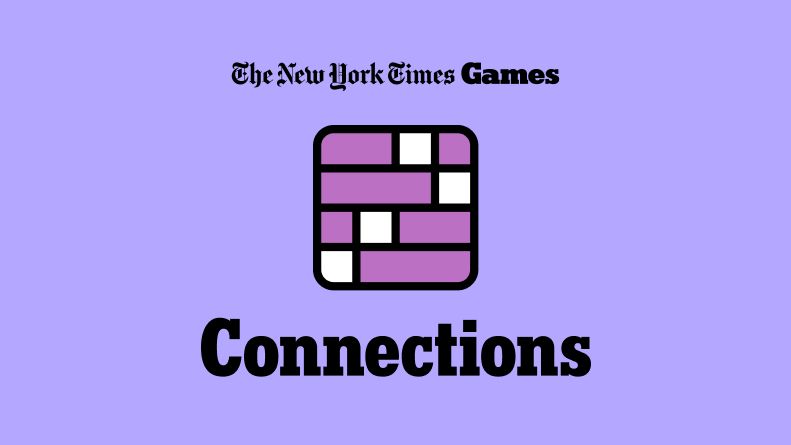The New York Times (NYT) Connections puzzle is a popular word game that challenges players to identify and group words into specific categories based on hidden connections. Each day, a new set of clues is presented, and players are tasked with categorizing words into four groups of four. However, the challenge lies in uncovering the sometimes tricky and unexpected connections between the words. Whether you’re a seasoned player or a newcomer, understanding the mechanics of this puzzle and having a few strategies up your sleeve can make all the difference. In this guide, we will explore helpful hints, strategies, and tips to master the Connections puzzle and enhance your puzzle-solving skills.
What Is the NYT Connections Puzzle?
The NYT Connections puzzle consists of 16 words arranged in a grid. Your objective is to divide the words into four groups of four based on shared themes or categories. The connections may be based on various themes, such as synonyms, common associations, historical references, and even obscure facts. The challenge lies in recognizing these connections, as the words often have multiple possible associations, and only one set of correct groupings will score.
Key Strategies for Solving the Connections Puzzle
Mastering the NYT Connections puzzle requires a strategic approach. Here are some strategies to help you solve the puzzle more efficiently:
- Start with Obvious Groups
Some connections are easy to spot right away. Look for words that immediately seem to belong together. For example, if you have words like “dog,” “cat,” “rabbit,” and “hamster,” the connection is likely animals. Sorting out these obvious groups first can help you narrow down your options for the remaining words. - Use Word Associations
Many of the words in the puzzle will have associations that are familiar to you. For example, if you see words like “star,” “planet,” “galaxy,” and “moon,” these words might belong to a group related to space. Thinking about common associations can help you make the connections quicker. - Look for Less Obvious Connections
Once you’ve grouped the obvious connections, focus on the remaining words. These will often require a bit more thought. For example, you may need to consider less direct associations, such as synonyms or thematic connections like names of historical figures, types of food, or elements of literature. - Consider Word Length and Structure
The length or structure of the words can sometimes provide clues. For example, four-letter words may be more likely to connect with one another based on linguistic or phonetic similarities. Pay attention to these structural cues to help you make your connections. - Process of Elimination
If you’re stuck, try to eliminate one or more words that don’t seem to fit in any of the existing groups. Sometimes, it’s helpful to discard possibilities to see what remains and test out new combinations. - Use Contextual Knowledge
Familiarity with current events, popular culture, history, and science can give you a significant advantage in solving the puzzle. Be on the lookout for modern references or phrases that might hint at a theme.

Common Themes and Categories in NYT Connections
While the Connections puzzle can feature an array of categories, some common themes and categories that frequently appear include:
- Animals: Commonly found groupings include animals, breeds, or classifications like mammals, birds, or marine life.
- Colors: Some puzzles focus on colors, including names of shades, like “blue,” “red,” “green,” or “yellow.”
- Famous People: A common grouping might include historical figures, celebrities, or political leaders.
- Food: Words may be grouped based on different types of food like fruits, vegetables, or dishes from a particular cuisine.
- Geography: City names, countries, or geographical features might form a group.
- Music: Famous musicians, instruments, or genres can often be seen in one of the groups.
- Movies and TV Shows: Films, TV series, actors, and directors often form recognizable categories.
- Historical Events: Certain puzzles might feature historical figures or events that are tied to particular years or movements.
Tips for Practicing and Improving Your Skills
- Play Regularly
The more often you play, the better you’ll get at spotting connections. Over time, you’ll begin to recognize recurring patterns and themes, which will make solving future puzzles easier. - Expand Your Vocabulary
The NYT Connections puzzle often includes lesser-known words or phrases, so expanding your vocabulary can help. Read widely, and pay attention to new terminology across a variety of fields, from science and technology to pop culture and literature. - Use Online Tools
There are several online tools and word association games that can help you practice recognizing connections between words. These resources allow you to test your abilities in categorizing and grouping words based on common themes. - Collaborate with Friends
If you find yourself stuck on a puzzle, consider solving it with friends or family. Discussing the puzzle with others can provide new perspectives and help you spot connections you might have missed on your own. - Embrace Trial and Error
It’s okay if you don’t get the puzzle right on your first try. Experiment with different combinations of words, and don’t be afraid to make mistakes. Trial and error are an integral part of learning how to identify connections. - Analyze Mistakes
After completing a puzzle, take time to review the solutions. Understanding why certain words are grouped together and learning from mistakes will help you improve your puzzle-solving skills over time.
Final Thoughts
The NYT Connections puzzle is a fun and engaging challenge that tests your ability to make connections between words, concepts, and themes. By following the tips and strategies outlined in this guide, you can enhance your puzzle-solving skills and increase your chances of completing the puzzle successfully. Remember, practice makes perfect, and with time, you’ll become a master of uncovering the hidden connections in each daily puzzle. Whether you’re solving the puzzle alone or with friends, each day offers a new opportunity to improve and enjoy the process of connecting the dots. Happy puzzling!

